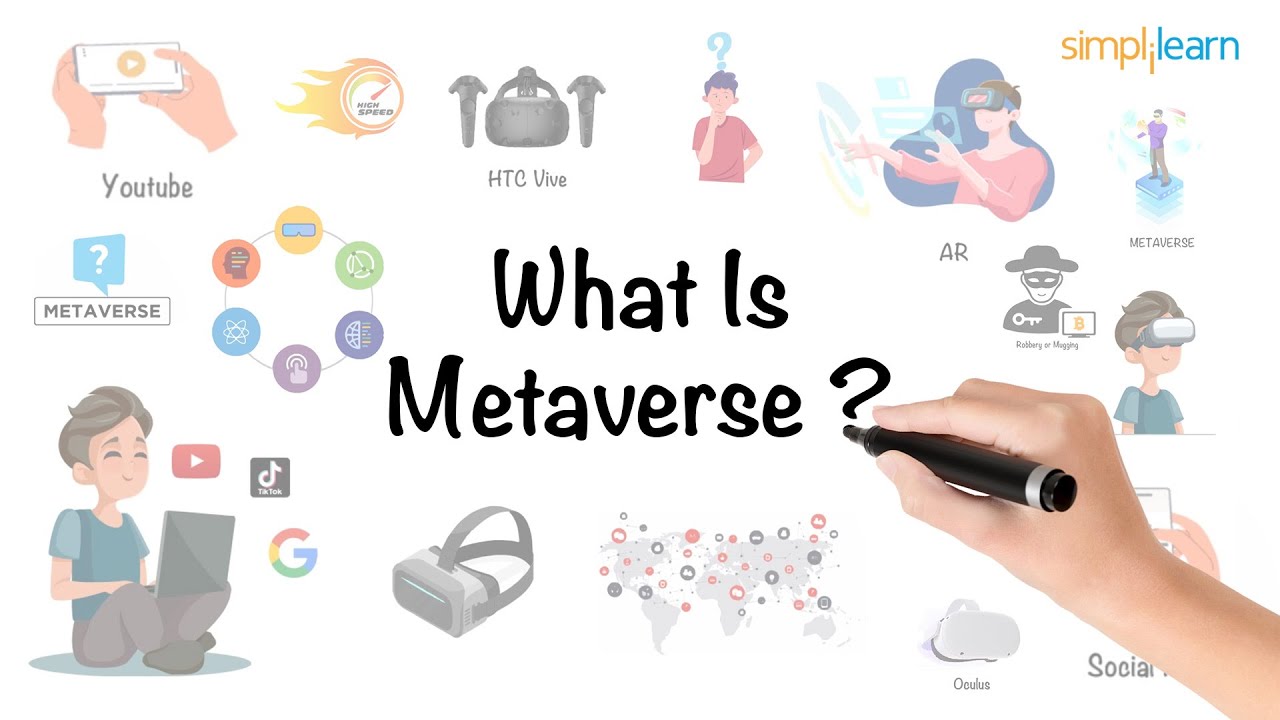AR, VR, MR: Making Sense of Magic Leap and the Future of Reality
Summary
TLDRVirtual reality (VR) is transforming the tech world, with devices ranging from budget-friendly options like Google Cardboard to powerful systems like Oculus Rift. VR creates immersive, 360° environments, but some believe augmented reality (AR) and mixed reality (MR) could be the future. While VR places users in artificial worlds, AR and MR blend virtual elements into the real world. AR overlays simple visuals, while MR allows interaction with virtual objects in real environments. Technologies like Microsoft's HoloLens and Magic Leap are paving the way, though affordable MR is still years away due to its complexity and processing demands.
Takeaways
- 😀 Virtual reality (VR) has become a significant presence, with products ranging from simple smartphone-powered devices like Google Cardboard to more immersive systems like Oculus Rift and HTC Vive.
- 😀 VR creates the illusion of being inside a 360° world, where users can look around in any direction, offering an immersive experience.
- 😀 While VR is widely popular, augmented reality (AR) and mixed reality (MR) are gaining attention as potentially more immersive technologies.
- 😀 AR overlays virtual elements onto the real world, such as a speedometer on a windshield or Snapchat's face filters.
- 😀 Mixed reality (MR) allows interaction with virtual objects integrated into the physical world, offering a deeper level of engagement.
- 😀 Microsoft's HoloLens and Magic Leap are leading the development of MR, enabling users to interact with virtual characters or turn their environment into an advanced workstation.
- 😀 MR is more complex and data-intensive than VR, requiring significant processing power to achieve its full potential.
- 😀 Affordable and user-friendly MR technology is still a few years away, but its promise to merge VR and AR is highly anticipated.
- 😀 The convergence of VR, AR, and MR is likely to create a future where the boundaries between reality and virtual environments are increasingly blurred.
- 😀 The blending of virtual and real worlds through MR has the potential to transform everyday tasks, from personal entertainment to professional workspaces.
Q & A
What is the main difference between Virtual Reality (VR) and Augmented Reality (AR)?
-VR creates an entirely artificial environment that immerses you in a 360° world, while AR overlays digital elements onto the real world, enhancing it without removing you from it.
How do Virtual Reality headsets like the Oculus Rift and HTC Vive work?
-These VR systems use an opaque display in front of your eyes, presenting stereoscopic 3D visuals to create the illusion of being inside an entirely different environment, allowing you to look in any direction and experience a 360° view.
What are the challenges with Mixed Reality (MR) compared to Virtual Reality?
-MR is more complex and data-intensive than VR, requiring significantly more processing power, which makes it harder to develop affordable and easy-to-use MR systems for now.
What makes Mixed Reality (MR) different from Augmented Reality (AR)?
-While AR simply overlays digital information on the real world, MR allows users to interact with virtual objects that are integrated into their natural surroundings, offering a more immersive and interactive experience.
Can you provide an example of a real-world application for Augmented Reality?
-One example is a speedometer displayed on a car's windshield, which provides the driver with real-time information without obstructing their view of the road.
How does Snapchat's face swap feature relate to Augmented Reality?
-Snapchat's face swap feature is a form of AR that superimposes digital images (like a different face) over the real-world view of the user's face, enhancing their interaction with reality.
What are the current limitations of Mixed Reality systems?
-Affordable and easy-to-use mixed reality systems are still a few years away because MR demands enormous processing power and complex technology to seamlessly blend the virtual and real worlds.
What is Microsoft's HoloLens, and how does it relate to Mixed Reality?
-Microsoft's HoloLens is an example of a Mixed Reality device that allows users to interact with virtual objects in the real world, making it possible to blend digital content with physical environments in real-time.
What is the potential of Mixed Reality for future work environments?
-Mixed Reality could transform workspaces by allowing for highly interactive, immersive workstations where users can manipulate digital objects in their real-world surroundings, boosting productivity and creativity.
Why is Mixed Reality considered the future convergence of VR and AR?
-MR represents the convergence of VR and AR because it combines the immersion of VR with the interaction of AR, creating a blend of reality and illusion that could define the future of how we experience digital content.
Outlines

This section is available to paid users only. Please upgrade to access this part.
Upgrade NowMindmap

This section is available to paid users only. Please upgrade to access this part.
Upgrade NowKeywords

This section is available to paid users only. Please upgrade to access this part.
Upgrade NowHighlights

This section is available to paid users only. Please upgrade to access this part.
Upgrade NowTranscripts

This section is available to paid users only. Please upgrade to access this part.
Upgrade NowBrowse More Related Video

The Rise Of Technology-Augmented Reality(AR), Virtual Reality(VR) And Mixed Reality(MR) |Simplilearn

The History of VR: Virtual Reality dates back to the 1800s!

The Incredible Evolution Of Virtual Reality

15 Awesome Other Things to do in, VR Non-Gaming - Quest 2 Tips and Tricks

The Original Oculus Rift?! In 2024? (CV1)

Metaverse Explained in 6 Minutes | What Is Metaverse and How Does It Work? | Simplilearn
5.0 / 5 (0 votes)